Polar Orbit vs Sun Synchronous Orbit
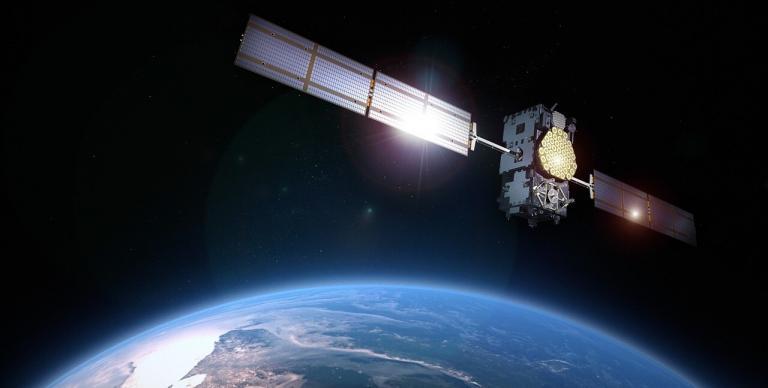
Polar Orbit vs Sun Synchronous Orbit
In general, there are two groups of satellites. First, some satellites orbit the equator. Secondly, other satellites orbit over or near the polar regions.
For example, Landsat, Worldview, and Sentinel-2 satellites are in a polar orbit (or near-polar orbit).
Polar orbits have specific characteristics that make them useful for various applications, particularly for Earth observation and scientific research.
But what are those benefits? In this article, we’ll explore polar orbits vs sun-synchronous orbits.
Why do some satellites have a polar orbit?
Almost all the satellites that are in a polar orbit are at lower altitudes. This is because we use them for applications such as monitoring crops, forests, and even global security.
A polar orbit travels north-south over the poles and takes approximately an hour and a half for a full rotation. As the satellite is in orbit, the Earth is rotating beneath it. As a result, a satellite can observe the entire Earth’s surface (off-nadir) in a time span of 24 hours.

Higher altitude satellites orbit more slowly because the circumference of the circular orbit is larger. Also, the pull of gravity is weaker at higher altitudes.
When a satellite has a sun-synchronous orbit, it means that it has a constant sun illumination through inclination and altitude. For sun-synchronous orbits, it passes over any given point on Earth’s surface at the same local solar time.
Because of the consistent lighting in sun-synchronous orbits, scientists leverage this in various remote sensing applications.
How are polar orbits different from geostationary orbits?
Geostationary satellites are launched into orbit in the same direction the Earth is spinning. When the satellite is in orbit at a specific altitude, it will exactly match the rotation of the Earth. This sweet spot is approximately 36,000 km above the Earth’s surface in high Earth orbit.
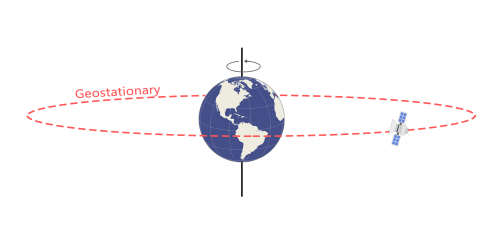
Weather, communication, and global positioning satellites are often in a geostationary orbit. Because the satellite follows the Earth’s rotation always at the same point, an observer on Earth would be able to continuously “see” it.
In the case of geostationary satellites, the Earth’s force of gravity is exactly enough to provide the acceleration required for circular motion.
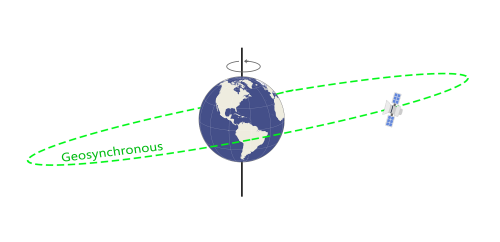
While geosynchronous satellites can have any inclination, the key difference from geostationary orbit is the fact that they lie on the same plane as the equator.
Geostationary orbits fall in the same category as geosynchronous orbits but with that one special quality of being parked over the equator.
How do satellites orbit Earth?
While polar orbits have an inclination of about 90 degrees to the equator, geostationary orbits match the rotation of the Earth.
A sun-synchronous orbit passes by any given point with the same local solar time, which is useful for consistent lighting and sun angle.
Out of the three types of orbits (low, medium, and high Earth orbits), polar orbits often fall into low Earth orbits. Learn more about geostationary and geosynchronous orbits.


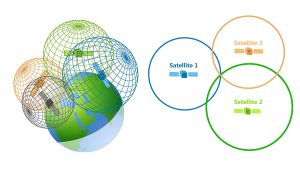

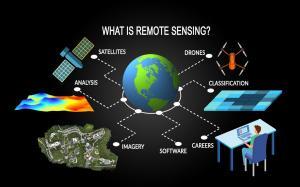

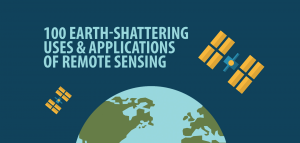


There are some Global positioning systems like India’s Navic which uses Geosynchronus satellites. US GPS however uses Medium Earth Orbit satellites.
This article in its original form must have been published in April 2019 or earlier. And thereafter, in the comments published above certain facts stated in the article have been claimed to be wrong by many readers. The article itself has again been updated on 30 May 2022. So, it leads to more confusion when one reads this article along with the comments published here. The original article should not have been modified. Instead, the author should have published clarificatory notes from time to time, if felt necessary, for a better understanding of the facts.
Dear sir/madam,
It is stated that “When a satellite has a sun-synchronous orbit, it means that it has a constant sun illumination through inclination and altitude.” This is wrong, a satellite in sun synchronous orbit is not always illuminated by the sun. The correct definition is that the orbital plane of a satellite in sun-synchronous orbit always has the same orientation with respect to the sun. Please let me know if it is changed.
Kind regards,
Walid El Bouhali
Aerospace engineering student
IN order to keep the satellite in orbit once it has the required speed no engine on board is needed to keep it in motion( Newton’s 1st Law of motion) neglecting air drag or orbit correction.
I agree with Steve VanWambeck on GPS constallation.
With regard to Christakis Fellas, the article meant that acceleration due to earth’s gravity, which basically equals centripetal acceleration of the circular trajectory, provides an orbit with a period equivalent to earth’s rotation.
It is stated in the article that: In the case of geostationary satellites, the Earth’s force of gravity is exactly enough to provide acceleration required for circular motion.
This statement is wrong. What happens in the case of a geostationary satellite is that the force of gravity at that height is exactly matched by the force of the satellite momentum, which is provided to the satellite by the launcher engines and the engine on board the satellite (called the Apogee Engine). There is no acceleration as such but a constant angular speed of 360 degrees per 24 hours.
Very simple and informative…Thank you so much
The statement “Weather, communication and global positioning satellites are often in a geostationary orbit” is incorrect. GPS is based on Medium Earth Orbits of six orbital planes.